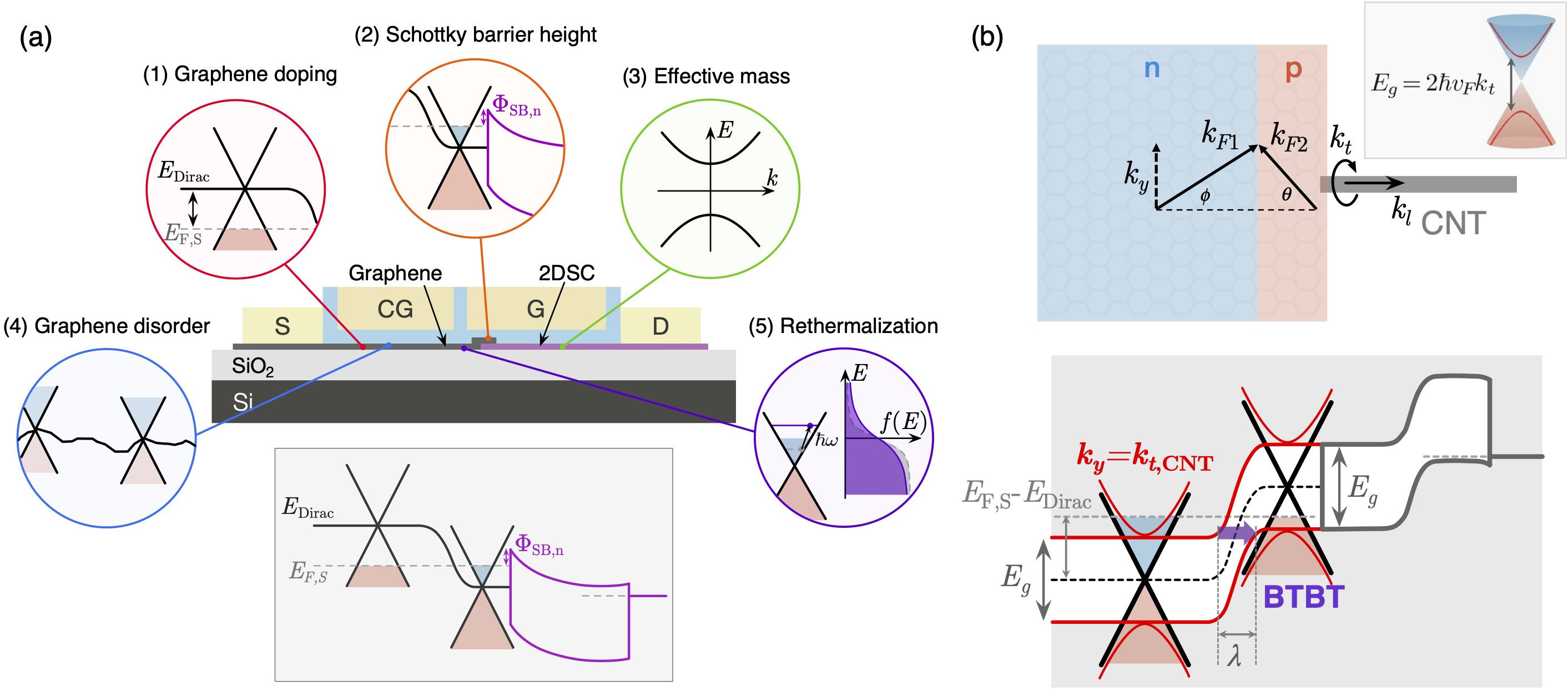Cold-source FET (CS-FET)
Cold-source/Dirac-source FET for low-power, steep-slope device using 2D materials

Cold-source FET (CS-FET) has been recently proposed as a promising candidate for low-power, steep-slope devices. The device structure of a CS-FET is similar to a MOSFET, except that the source is replaced by a cold source (Fig. 1a), in which the number of modes MS(E) decreases with higher energy E. That is to say, the number of conducting channels decreases with higher energy. Thus, the high-energy carriers are partially or completely cut off (depending on whether a band gap is present in the cold source) due to the low-pass energy filtering of MS(E), resulting in an effectively “colder” distribution of the carriers injected into the channel, and thus allowing to achieve a steep SS.
Compared with TFET, which also relies on energy filtering to achieve a steep SS, CS-FET has two major differences/advantages: (1) absence of tunneling through a band gap, thus avoiding the ION penalty associated with less-than-unity tunneling transmission in TFETs; (2) the energy filtering in the cold source being independent of the gate control of the potential barrier in the channel, thus resolving a common issue in TFETs that the energy filtering effect (and thus SS) continuously deteriorating due to a widened tunneling window close to the on-state of the device. Simulation of Dirac-source FET (DS-FET, a variant of CS-FET with graphene as cold source) with MoS2 channel (Fig. 1b) shows a steep SS of 37 mV/dec and a large ION>200 μA/μm at VDD=0.4V (Fig. 1c), highlighting the potential of CS-FET as a steep-slope transistor.

We have studied the design considerations of 2D DS-FET (Fig. 2a), including: (1) doping of graphene Dirac-source; (2) Schottky barrier height; (3) effective mass; (4) disorder in graphene Dirac-source; (5) rethermalization. We have also proposed an alternative mechanism (Fig. 2b) for the steep-slope switching in 1D carbon nanotube (CNT) DS-FET. Please refer to our papers for more details.
Related publications:
-
2022
IEEE T-EDIEEE Transactions on Electron Devices, 69(8), 4674–4680, 2022
-
2022
IEEE T-EDIEEE Transactions on Electron Devices, 69(8), 4681–4685, 2022
-
2022
IEEE T-EDIEEE Transactions on Electron Devices, 69(9), 5270–5275, 2022